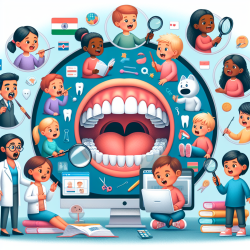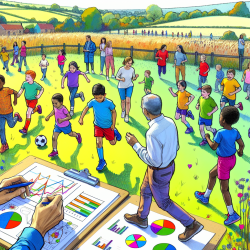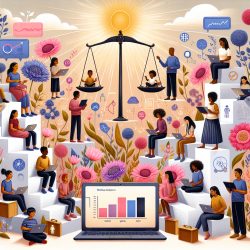In the field of speech-language pathology, data-driven decisions are crucial for achieving the best outcomes for children. The research article titled "Prevalence of dyslalias in 8 to 16 year-old students with anterior open bite in the municipality of Envigado, Colombia" provides valuable insights that can help practitioners refine their approach to treating dyslalias associated with anterior open bite (AOB).
The study examined 6,165 children, identifying 166 with AOB, resulting in a prevalence of 2.7%. Of these, 77.4% exhibited some form of dyslalia, with distortion being the most common type (75.8%). The most frequently altered phonemes were /d/, /t/, /s/, /ch/, and /ñ/. Interestingly, no significant association was found between the severity of AOB and the type of dyslalia.
Key Findings and Implications for Practice
- Prevalence of Dyslalia: The high prevalence of dyslalia in children with AOB (77.4%) underscores the need for targeted speech therapy interventions.
- Type of Dyslalia: Distortion dyslalia was the most common type, found in 75.8% of the children. This suggests that speech therapists should focus on addressing distortions in phoneme articulation.
- Phonemes Affected: The phonemes most frequently affected were /d/, /t/, /s/, /ch/, and /ñ/. This information can guide therapists in prioritizing which phonemes to target during therapy sessions.
- Interdisciplinary Approach: The study recommends an interdisciplinary approach involving orthodontists and speech therapists to diagnose and treat both occlusal and phonetic problems, reducing the likelihood of recurrence.
Implementing Research Outcomes in Practice
To improve therapeutic outcomes for children with AOB and dyslalias, practitioners can implement the following strategies:
- Early Identification: Conduct early screenings for AOB and associated dyslalias in school-aged children. Early identification allows for timely intervention, which can mitigate the severity of speech disorders.
- Targeted Therapy: Focus on the specific phonemes most commonly affected by AOB. Customized therapy plans that address distortions in /d/, /t/, /s/, /ch/, and /ñ/ can lead to more effective outcomes.
- Interdisciplinary Collaboration: Work closely with orthodontists to ensure that dental corrections are complemented by speech therapy. This collaborative approach can address both the structural and functional aspects of speech disorders.
- Continuous Monitoring: Regularly assess the progress of children undergoing therapy to adjust treatment plans as needed. Continuous monitoring helps in identifying any recurring issues and allows for timely modifications in therapy.
By integrating these strategies into their practice, speech therapists can enhance their ability to diagnose and treat dyslalias associated with AOB, ultimately improving communication outcomes for children.
For those interested in delving deeper into this topic, the original research paper provides a comprehensive analysis and can be accessed here: Prevalence of dyslalias in 8 to 16 year-old students with anterior open bite in the municipality of Envigado, Colombia.










